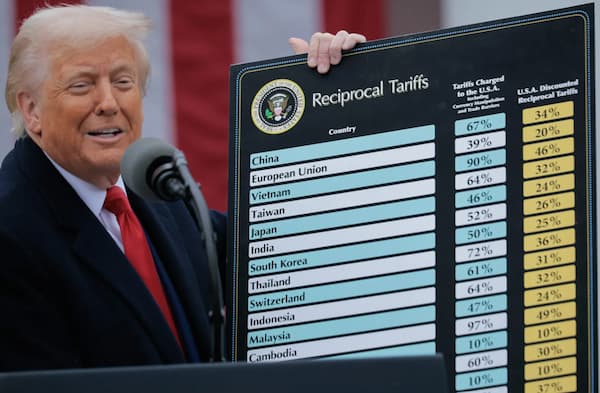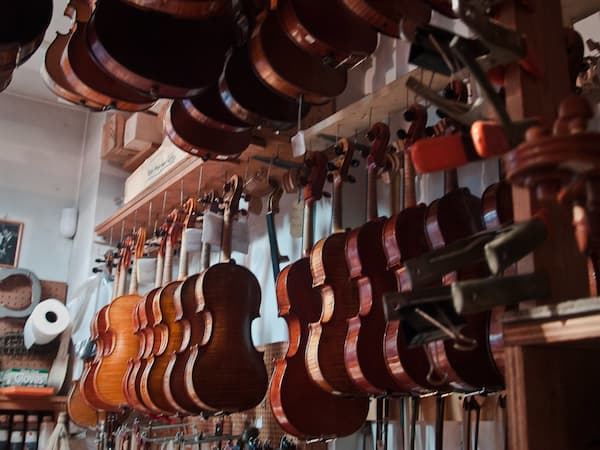Since Inauguration Day 2025, the world has been scrambling to keep up with rapidly changing developments surrounding American tariffs.
President Trump made the imposition of tariffs a central promise of his 2024 campaign, routinely calling the word “the most beautiful word in the dictionary.”

According to Cambridge Dictionary, a tariff is “a charge or list of charges either for services or on goods entering a country.” This charge is paid by the importer.
How do tariffs work and who really pays for them?
On 2 April, a day the president dubbed Liberation Day, the administration announced dozens of tariffs on foreign goods. A week later, the Trump administration raised tariffs on Chinese goods to 145%.
By 22 April, Trump appeared to soften his position somewhat, stating he anticipated that after negotiations, the tariffs on Chinese imports would eventually “come down substantially” but not to “zero.”
American and Chinese officials have given conflicting reports as to whether those negotiations are ongoing.
As of mid-May, there remains a great deal of volatility. But here’s what we know about what impact these tariffs might have on classical music.
Why the Trade War Matters to Beginning Students

Almost all American musicians begin learning on inexpensive instruments that come from factories in other countries.
According to the US Census Bureau, the top five countries exporting musical instruments to the United States are:
- China (at a value of $560 million a year)
- Indonesia (at a value of $225 million a year)
- Japan (at a value of $166 million a year)
- Mexico (at a value of $117 million a year)
- Taiwan (at a value of $88 million a year)
Take Beginner Violins as an Example
Many musical instruments, especially for beginner students, are manufactured in China at a low price.
According to the Peterson Institute for International Economics, a full 83% of imported bowed stringed instruments are made in China. (Read about “New tariffs on China could silence the next generation of musicians”)
In the recent past, parents or a school music program could expect to pay around $300 per beginner violin. The vast majority of instruments at this price point come from China.
Violins are also made in America. However, the American market is geared toward making instruments for intermediate to advanced players, who have already been playing for years and have a budget closer to $5,000 or $10,000 or more.
The infrastructure in the United States is not in place to immediately start making millions of dollars worth of $300 violins.
It’s a similar story for instruments like violas, cellos, basses, trumpets, French horns, trombones, tubas, flutes, electric keyboards, etc.
But the Issues Won’t Stop With Beginner Musicians

The tariffs planned for goods made in the European Union are smaller, but also worth discussing.
On Liberation Day, the Trump administration announced a 20% tariff on goods from the EU. However, a week later, it changed course, lowering these tariffs to 10% for ninety days to allow for additional negotiations. The new deadline will come in July.
Important musical supplies are manufactured in Europe. For example, several string companies are based there: Thomastik-Infeld is based in Austria, Pirastro is based in Germany, and Larsen is based in Denmark.
Strings are a major expense for musicians. A full set can cost from $100 to $400, depending on the instrument and the brand.
For students or working musicians who are already struggling to get by, a potential 20% increase in string price is going to be extremely difficult to swallow.
One side effect that we may see is that D’Addario Strings may become more popular in the United States. They are manufactured domestically in New York and won’t be subject to tariffs. It is unclear, however, if the materials they use in production are manufactured overseas; if so, they will be affected, as well.
Of course, strings are only one type of good a musician might need. There are many other types of supplies that will also be tariffed.
What Will the Impacts Be?

It is difficult to know how exactly this situation will play out, given the uncertainty surrounding the length and outcome of the trade war.
However, if these tariffs last for weeks or months, Americans should be aware of the potential upcoming impacts on musical life.
School budgets – already under immense pressure and uncertainty with the dissolution of the Department of Education – are going to struggle to cover the cost of instruments that are suddenly twice as expensive. School music programs may need to be suspended or axed altogether.
Talented but poor students may be forced to quit playing, or play on instruments that they’ve outgrown.
String instrument rental programs may see an increase in demand, but it’s unclear if that increase would be met by the current supply. Rental rates may have to rise to keep up with rising maintenance costs and shrinking inventory.
Music teachers may see fewer students as fewer families cannot afford an increasingly expensive hobby. They may need to lower rates to retain students.
Shops may see decreased business, as their supply of instruments, as well as strings and other vital supplies, dry up.
There are likely going to be other domino effects that are impossible to predict right now.
Final Takeaways
Of course, the final outcome of the trade wars has yet to be written. Over the following months, we will learn more about how the Trump administration’s decisions will affect the music world.
But in the meantime, stay informed and alert. Prepare for future price hikes. And if you’re in a position to mitigate any of the damage these tariffs may cause, be sure to do whatever you can.
For more of the best in classical music, sign up for our E-Newsletter




